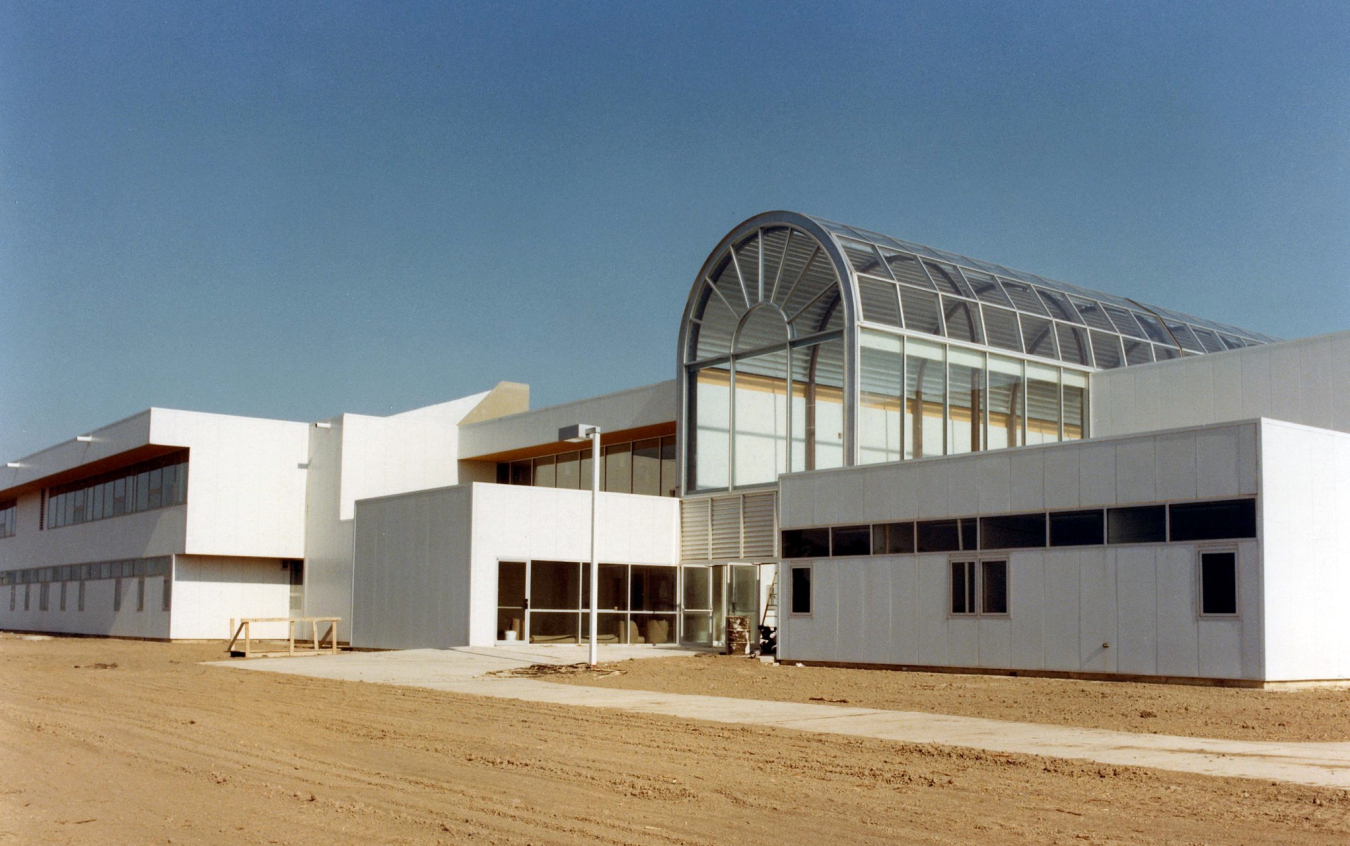
Mississippi County Community College has passive solar architecture and an active solar energy system.
Thermal Mass
Both interior and exterior thermal mass can support thermal comfort and energy efficiency in zero energy buildings.
The impact of intermittent exterior conditions (sun or air temperature) can be “stored” to offset the impact of later conditions that might drive the space temperature in the opposite direction. The perfect example of such “storage” is the impact of a massive exterior wall on the building internal temperature, when the daytime exterior temperature oscillates across the comfort band. Nighttime heat losses and daytime heat gains to some extent cancel one another in their journey across the depth of the wall, resulting in a much smaller temperature swing on the interior surface of the wall, that may well stay within the comfort band. External mass will, in effect, “average” the impact of ambient external conditions on the interior environment. In effect, it will reduce the peak conditioning demand on the space, but may amplify the minimum conditioning demand. This strategy is most effective when the ambient diurnal temperature swing is extreme, but still traverses the comfort zone.
Internal thermal mass is mass that is entirely contained within the building envelope. While it is often said that internal thermal mass tends to mitigate interior temperature swings, one must remember that heat transfer between the thermal mass and the air must be driven by temperature difference. Therefore, to “exercise” the thermal mass, to make use of its thermal storage capacity, the air must be warmer than the thermal mass to drive heat into it, and must be colder than the thermal mass to extract heat from it. As a result, the cycling of air temperature must necessarily have a greater amplitude than the cycling of the thermal mass temperature. For certain types of occupancies, cycling of air temperature may be acceptable; for others not. In any event, if the ambient diurnal temperature cycle does not traverse the temperature of the internal cycle, thermal mass will have little effect on the daily heat transfer across the building envelope and little effect on total conditioning required.
Thermal mass can significantly improve thermal comfort, however, in spaces that have significant swings in air temperature. If the thermal mass has significant area in the space, its relatively invariant surface temperature can reduce fluctuations in mean radiant temperature, resulting in improved thermal comfort. Interior thermal mass is particularly effective in spaces with significant solar gain, because it dampens the peak conditioning loads or temperature variations that might occur due to highly variable solar heat gains.
Phase-Change Materials
Much like thermal mass, phase-change materials on the interior can help reduce temperature fluctuations. These materials work by storing energy while in one phase and releasing it very gradually during the shift to another phase—for example, from solid to liquid.

